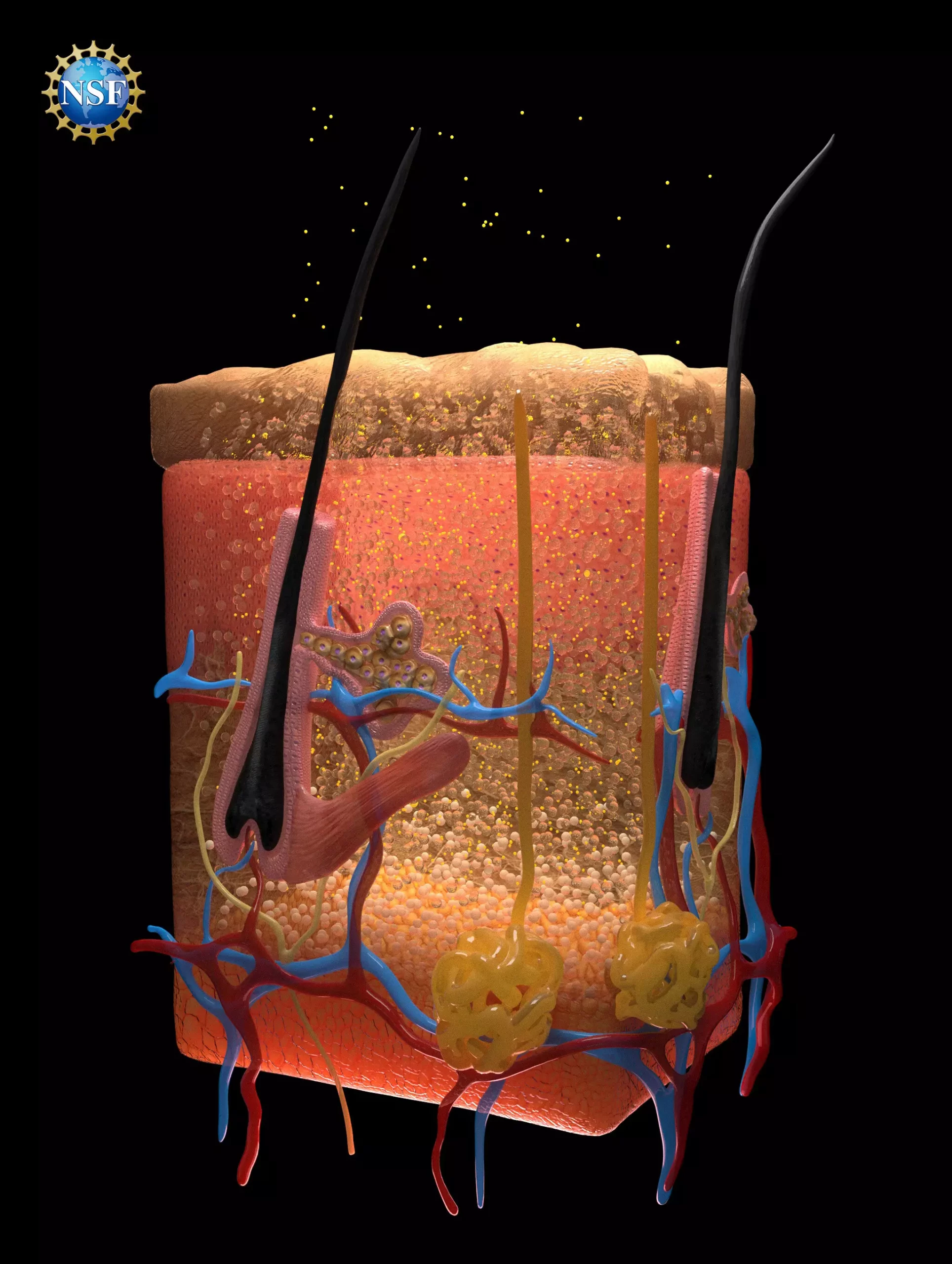The advancement of medical imaging has consistently pursued clearer, more precise methods of observing the body’s inner workings. Recent research, published by Stanford University scientists in *Science*, introduces a novel method for enhancing the visibility of internal organs by utilizing food-safe dyes to render biological tissues transparent. This groundbreaking technique may lead to significant improvements in medical diagnostics, offering innovative applications from detecting injuries to identifying cancerous cells.
Understanding the Mechanism of Transparency Through Dyes
At the heart of this technique lies an intriguing counterintuitive process: making opaque biological tissues transparent, a feat achieved through the application of specific dyes that absorb light. The primary challenge in achieving transparency in biological tissues is the disparate refractive indices of the various components—fats, proteins, and fluids—which scatter incoming light, making it impossible to see through. To counter this scattering effect, researchers tapped into fundamental principles of optics: matching the refractive indices of tissues with those of the dye.
Guosong Hong, an assistant professor at Stanford and one of the researchers involved, highlighted the potential of this technology in assisting not only the drawing of blood and enhancing tattoo removal procedures but also facilitating better light penetration necessary for laser therapies aimed at treating cancerous lesions.
Experimental Validation and Results
The Stanford team began their investigations with preliminary experiments using thin slices of chicken breast. By incrementally increasing the concentration of the food dye tartrazine (commonly known as FD&C Yellow 5), they observed how the dye could align the refractive indices within the muscle tissues, resulting in increased transparency. This foundational research laid the groundwork for subsequently applying the technique in live animal models, where the dye was administered topically.
In their trials, the researchers successfully rendered the skin of mice transparent, revealing an intricate network of blood vessels within the skull and the dynamic contractions occurring in the abdominal cavity. Remarkably, this temporary application of dye did not have lasting negative effects on the animals, demonstrating that the method is safe and reversible.
Applications in Medicine: A New Frontier
The implications of this technique are profound. Beyond aesthetic procedures or superficial diagnostics, this method could fundamentally transform how medical professionals diagnose and monitor various health conditions. For instance, by improving visibility into veins for blood draws or offering a clearer view of the digestive tract, this technology provides the potential for more precise medical interventions.
Moreover, when considering its application in oncology, the advantages become even more significant. Many laser-based treatments for cancer are currently limited by their inability to penetrate beyond superficial layers of tissue. However, this new transparency technique could allow medical practitioners to treat deeper tumors more effectively, enhancing both detection and therapy.
The research team was inspired by earlier optics concepts dating back to the 20th century, specifically the Kramers-Kronig relations and Lorentz oscillation theories, which enabled predictions of how dyes interact with biological tissues. Graduate researcher Nick Rommelfanger and postdoctoral researcher Zihao Ou spearheaded these efforts, meticulously sourcing and evaluating various dyes for their optical properties.
The team’s innovative approach combined rigorous experimental design with insights gleaned from basic physics, leading to remarkable advancements. They employed various analytical systems, including a specialized ellipsometer, traditionally used in semiconductor manufacturing but repurposed here to predict the optical characteristics of the dyes, showcasing the versatility of such tools in unexpected contexts.
As scientific inquiry often leads to unforeseen discoveries, the researchers firmly believe that their findings will pave the way for a budding field focused on the matching of dyes to biological tissues, considering myriad optical properties. With additional research, deeper applications can arise, extending beyond diagnostics to more holistic understandings of biological functions.
Encouragingly, the support from institutions like the National Science Foundation for such interdisciplinary projects signals an exciting era of research where basic science can lead to extraordinary medical advancements. By pushing the boundaries of traditional disciplines, teams like the one at Stanford are demonstrating the power of innovative thinking in solving complex biological challenges.
The development of a technique to render biological tissues transparent using safe food dyes not only demonstrates a significant advance in imaging technology but represents a vital leap forward in improving medical diagnostics and treatments. As researchers continue to explore this new frontier, the potential benefits to patient care are immense and transformative.

